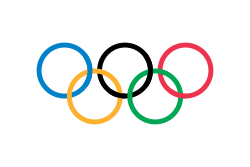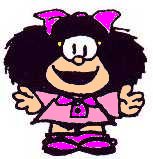Nelson
Mandela:
 Nelson
Rolihlahla Mandela
Nelson
Rolihlahla Mandela (born
18 July 1918) is a
South
African politician who
served as
President
of South Africa from
1994 to 1999, the first ever to be elected in a
fully
representative democratic
election. Before being elected President, Mandela was a militant
anti-
apartheid activist,
and the leader and co-founder of
Umkhonto
we Sizwe,
the armed wing of the
African
National Congress (ANC).
In 1962 he was arrested and convicted of
sabotage and
other charges, and sentenced to life imprisonment. Mandela went on to
serve 27 years in prison, spending many of these years on
Robben
Island.
Following his release from prison on 11 February 1990, Mandela led
his party in the negotiations that led to the establishment of
democracy in 1994. As President, he frequently gave priority to
reconciliation, while introducing policies aimed at combating poverty
and inequality in South Africa.
In South Africa,
Mandela is often known as Madiba,
his Xhosa
clan name;
or as tata (Xhosa: father). Mandela
has received more
than 250 awards over
four decades, including the 1993 Nobel
Peace Prize.
Political
Actitvitie: After the 1948 election victory of
the Afrikaner-dominated National
Party,
which supported the apartheid policy
of racial
segregation,
Mandela began actively participating in politics. He led prominently
in the ANC's 1952 Defiance
Campaign and
the 1955 Congress
of the People,
whose adoption of the Freedom
Charter provided
the fundamental basis of the anti-apartheid cause. During
this time, Mandela and fellow lawyer Oliver
Tambo operated
the law firm of Mandela
and Tambo,
providing free or low-cost legal counsel to many blacks who lacked
attorney representation.
Mahatma
Gandhi influenced
Mandela's approach, and subsequently the methods of succeeding
generations of South African anti-apartheid activists. Mandela
later took part in the 29–30 January 2007 conference in New Delhi
marking the 100th anniversary of Gandhi's introduction
of satyagraha (non-violent
resistance) in South Africa.
Initially
committed to nonviolent
resistance,
Mandela and 150 others were arrested on 5 December 1956 and charged
with treason. The marathon Treason
Trial of
1956–1961 followed, with all defendants receiving acquittals. From
1952–1959, a new class of black activists known as the Africanists
disrupted ANC activities in the townships, demanding more drastic
steps against the National Party regime. The
ANC leadership under Albert
Luthuli, Oliver
Tambo and Walter
Sisulu felt
not only that the Africanists were moving too fast but also that they
challenged their leadership. The
ANC leadership consequently bolstered their position through
alliances with small White, Coloured, and Indian political parties in
an attempt to give the appearance of wider appeal than the
Africanists. The
Africanists ridiculed the 1955 Freedom
Charter Kliptown
Conference for the concession of the 100,000-strong ANC to just a
single vote in a Congressional alliance. Four secretaries-general of
the five participating parties secretly belonged to the
reconstituted South
African Communist Party (SACP). In
2003 Blade
Nzimande,
the SACP General Secretary, revealed that Walter
Sisulu,
the ANC Secretary-General, secretly joined the SACP in 1955which
meant all five Secretaries General were SACP and thus explains why
Sisulu relegated the ANC from a dominant role to one of five equals.
In 1959, the ANClost its most militant support when most of the Africanists, withfinancial support from Ghana andsignificant political support from the Transvaal-based Basotho,broke away to form the PanAfricanist Congress (PAC)under the direction of RobertSobukwe and PotlakoLeballo.
Mohandas
Gandhi:
 Mohandas Karamchand Gandhi
Mohandas Karamchand Gandhi (October
1869 – 30 January 1948), commonly known as Mahatma Gandhi,
was the preeminent leader of Indian
nationalism in British-ruled
India. Employing non-violent civil
disobedience, Gandhi led India to
independence and inspired movements for non-violence, civil rights
and freedom across the world.
Son of a senior government official,
Gandhi was born and raised in a Hindu Bania community
in coastal Gujarat,
and trained in law in London. Gandhi became famous by fighting for
the civil rights of Muslim and Hindu Indians in South Africa, using
the new techniques of non-violent civil disobedience that he
developed. Returning to India in 1915, he set about organising
peasants to protest excessive land-taxes. A lifelong opponent of
"communalism"
(i.e. basing politics on religion) he reached out widely to all
religious groups. He became a leader of Muslims protesting the
declining status of the Caliphate.
Assuming leadership of the Indian
National Congress in 1921, Gandhi led nationwide
campaigns for easing poverty, expanding women's rights, building
religious and ethnic amity, endinguntouchability,
increasing economic self-reliance, and above all for
achieving Swaraj—the
independence of India from British domination.
Gandhi led Indians in protesting the
national salt tax with the 400 km (250 mi) Dandi
Salt March in 1930, and later in demanding the
British to immediately Quit
India in 1942, during World
War II. He was imprisoned for that and for numerous
other political offenses over the years. Gandhi sought to practice
non-violence and truth in all situations, and advocated that others
do the same. He saw the villages as the core of the true India and
promoted self sufficiency; he did not support the industrialization
programs of his discipleJawaharlal
Nehru. He lived modestly in a self-sufficient
residential community and wore the traditional
Indian dhoti and
shawl, woven with yarn he had hand spun on a charkha.
His political enemy Winston
Churchill ridiculed him as a "half-naked
fakir." He was a dedicated vegetarian, and undertook
long fasts as
means of both self-purification and political mobilization.
In his last year, unhappy at
the partition
of India, Gandhi worked to stop the carnage between
Muslims on the one hand and Hindus and Sikhs that raged in the border
area between India and Pakistan. He was assassinated on 30 January
1948 by a Hindu nationalist who thought Gandhi was too sympathetic to
India's Muslims. 30 January is observed as Martyrs'
Day in India. The
honorific Mahatma(Sanskrit: mahāt̪mā)or "Great Soul", was applied to him by 1914. In Indiahe was also called Bapu (Gujarati: bāpuː or"Father"). He is known in India as the Fatherof the Nation; his birthday, 2 October, iscommemorated there as GandhiJayanti, a nationalholiday, and world-wide as the InternationalDay of Non-Violence. The title of 'Father of Nation'was not formally conferred by the Government on Gandhi. Gandhi'sphilosophy was not theoretical but one of pragmatism, that is,practicing his principles in real time. Asked to give a message tothe people, he would respond, "My life is my message."











